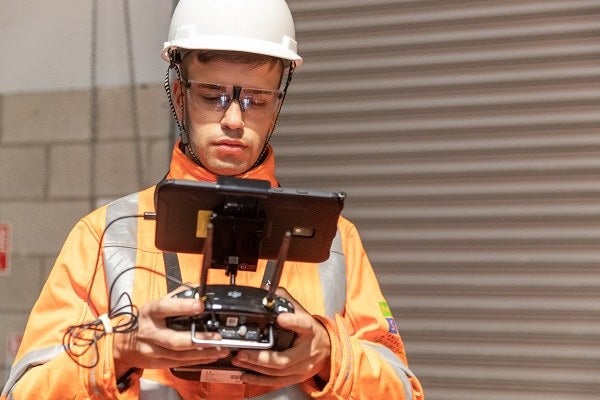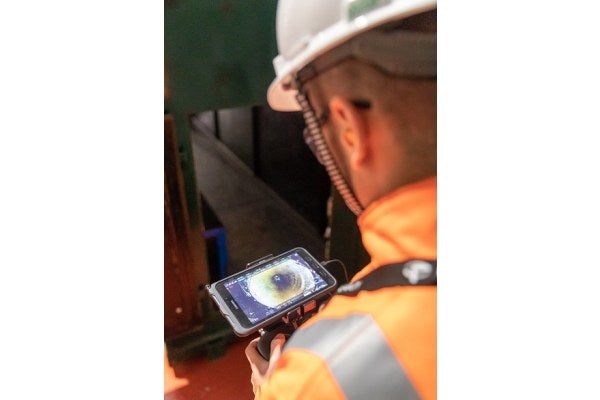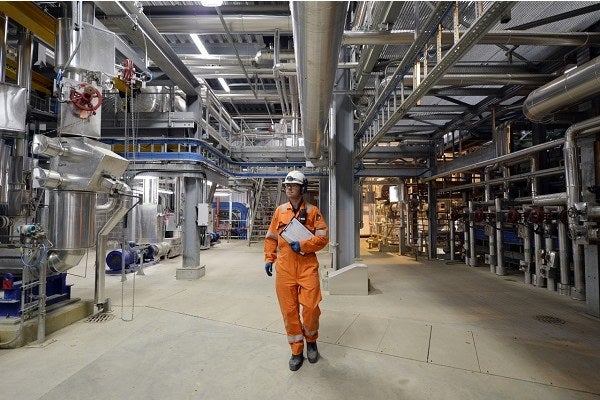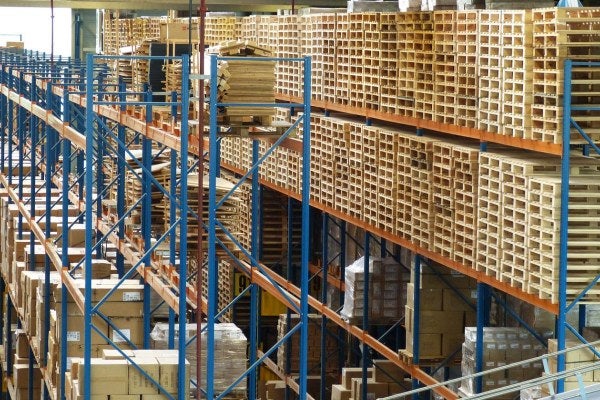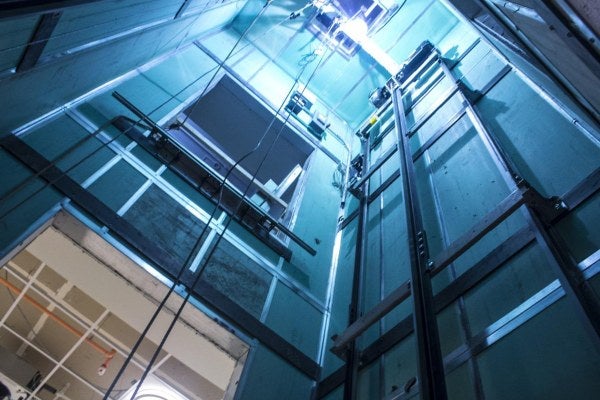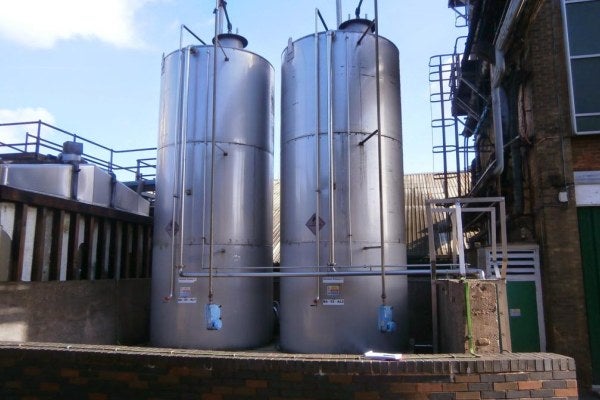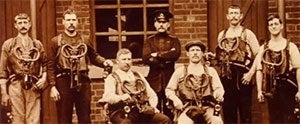Drones can be a viable alternative to replace manual inspection in warehouses and factories. In warehouses, drones can for example inspect roofs, racking, pallet placements, walls, and ceilings. Drones can also be used in silos for planned inspections or ahead of any cleaning required.
Traditional methods for such inspections can involve expensive scaffolding, racking, or the use of MEWPs and sometimes work is obstructed during inspections. Instead of people checking structure etc, a drone could do so in less time and at a fraction of the cost.
Indoor drones are a perfect fit for tasks that require monitoring and inspection in dangerous or high areas as they can reach heights with ease and eliminates the need for people to work at height to complete the inspection.
Drones can ‘fly high’ in warehouses and keep an eye on factories too, so let’s look at several potential applications and uses:
1. High racking
Some warehouses are vast, and racking can reach heights of 10 metres or more to maximise storage. In such warehouses, forklift drivers collect pallets from such high racking by extending the cab to the required height, but they don’t visually see the racking and so inspections require rope access or scaffolding to complete this task.
Drones make this simple, reaching high areas with ease with no need to climb or risk of falling. Not only does this make drones safer, but it also saves time before and after inspection.
2. Overhead cranes
Overhead cranes are internally built in many factories and run up and down on guide rails, picking and carrying as required. You will also find such cranes in steel works; power stations and other industrial settings and they can be either manned or unmanned (remote control operated). Running gear is built into the side of the building generally and a bogie sits on the running rails with captivators. A central beam houses the control house, and the latter control house is where the crane operator sits to move the crane as required.
The running gear, rails, crane body and structure all require regular inspection and internal inspection drones can be used to reduce these risky and time-consuming inspections and save considerable time and money as production does not need to be shut down.
3. Internal roof inspections
Drones can be used to check the condition of internal roofs on warehouses and factories – they can check the underside of the roof, the structural steelwork that supports the roof and check for any leaks or other structural issues.
Drones are a much cheaper and efficient way to do these inspections rather than use expensive scaffolding, and safer too.
So don’t be surprised when you are next in a warehouse or factory to see a new sight buzzing around.
4. Ducting
Ducting is used in most factories and warehouses for ventilation, heating or air conditioning to extract and deliver air. Ducting is tubes or pipes that carry the moving air. It requires routine inspection to check its condition and that there are no blockages, so that the air quality and efficiency of the ducting system is maintained.
Ducting is usually hung / suspended at height and drones can be used to fly inside and outside the ducting to check for leaks, cracks, joints and general wear and tear of the structure.
5. Services
Factories and warehouses have a wide range of services that support the infrastructure of the building – water pipes, communication cables, lighting and lighting cables – and these can often be situated in the roof space or at a high level.
The integrity and condition of such services needs to be checked and so again, internal inspection drones are an ideal solution for this high-risk operation.
6. Lift shafts
Visual surveys of lift shafts, often found in factories and warehouses, are conducted to check the equipment, shaft linings and counterweight systems.
Many lift shafts have numerous access points and so an internal inspection drone can be used to conduct these inspections as although the battery life is around 10 minutes, multiple batteries mean the drone can inspect at each entry point up to the next and provide detailed photographs and 3D visual reports.
7. Silos
It is important to ensure regular maintenance of these large structures, to ensure they are fully operational all year. Drones can be used to inspect inside these silos, and other difficult to access places on farms and agricultural settings. Reducing risk, cost and saving time too.
By using a drone for the initial inspection of a warehouse, factory or silo, businesses avoid health and safety risks of sending a worker up to inspect the issue using rope access or expensive scaffolding. Initial inspections can be carried out by a single pilot from the ground safely and should be considered as a solution for initial fault-finding and inspections.
